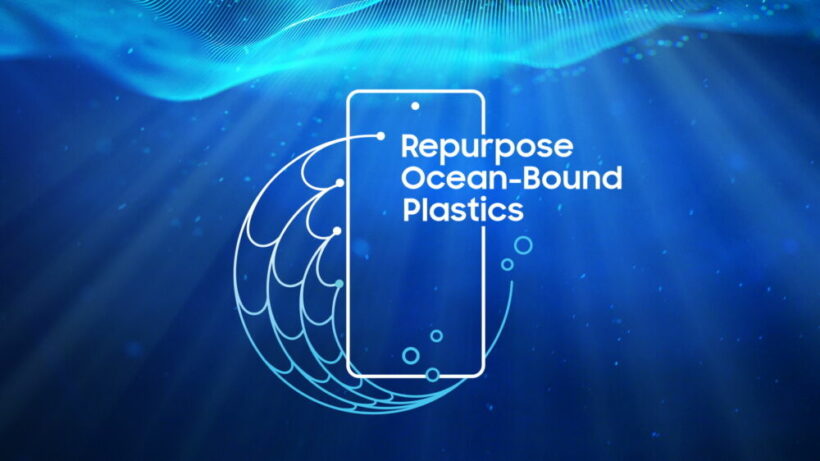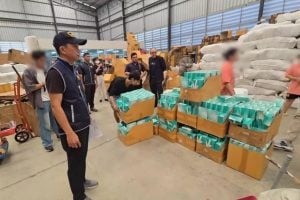Samsung builds phones with old fishing nets, bets you’ll pay premium prices

Your next Samsung smartphone will certainly come with a hefty price tag, despite presumably less premium materials. But you can feel good about it because, who knows, you might be saving the whales.
In a Sunday press release on their website, Samsung announced it has created a new material “made with repurposed ocean-bound discarded fishing nets,” which it plans to use in all future mobile devices, beginning with its newest lineup of Galaxy S smartphones to be announced at their Unpacked event on February 9.
So you can expect lower prices, right?
Probably not. The upcoming Galaxy S series lineup of smartphones are rumoured to cost at least as much as last year’s models, possibly more. At launch, the 2021 lineup began at B27,900 for the S21 5G base model, B33,900 for the S21+ 5G midrange model and B39,900 for the flagship S21 Ultra 5G, according to Android Authority. Recently, those prices have been reduced slightly as Samsung prepares to debut the 2022 lineup.
The company’s fishing for good PR is in line with its “Galaxy for the Planet” sustainability platform, which outlines four near-term goals to achieve by 2025, including incorporating recycled material in all new mobile products, eliminating all plastics in mobile packaging, achieving zero waste to landfill, and reducing standby power consumption of all smartphone chargers to below 0.005W.
“These devices will reflect our ongoing effort to eliminate single-use plastics and expand the use of other eco-conscious materials, such as recycled post-consumer material (PCM) and recycled paper,” the company wrote. “With this transformation, the future of Galaxy technology will bring leading product design and deliver better environmental impact.”
Last year Samsung removed the wall chargers from its phone boxes, following an industry-wide trend started by Apple, claiming to reduce electronic and packaging waste. (Never mind you’ll have to buy a wall charger in a separate box with more packaging if you need a new one.) Now they’re building premium devices out of discarded fishing nets. This begs consumers to ask the question: What’s next? But first, what is ocean-bound plastic and why is Samsung using it?
What is ocean-bound plastic, anyway?
To understand Samsung’s eco-conscious marketing jargon, you have to know what “ocean-bound plastic” is and how sustainability efforts from big corporations like Samsung are actually impacting the larger picture of plastic pollution in the ocean.
According to Samsung, “Ocean-bound plastic is abandoned plastic waste of all sizes (micro-plastics, mezzo-plastics and macro-plastics) that are located within 50km of shores in communities or areas where waste management is inexistent or very inefficient.”
This includes an annual accumulation of nearly 650 thousand tonnes of discarded fishing nets lurking in the world’s oceans, according to the 2009 report by the United Nations Environment Programme that Samsung cited.
“But complex problems require complex solutions, which is why we can’t settle for ‘ocean-bound,'” writes Rob Ianelli on SustainableBrands.com. “Diverting ocean-bound plastics is a worthy cause, but it only scratches the surface of the broader challenge of mismanaged waste. Plastics classified as ocean-bound don’t constitute enough of the total plastic waste volume to drive meaningful systemic change. They offer a catalyzing message, but leave far too much plastic out of the equation.”
So how will it work?
Notably, Samsung yet to provide data and details about its plan. How exactly will Samsung collect and repurpose old fishing nets? How many tonnes of this dangerous material have they already scooped up from the seas? How many kilometres of coral reefs have been rescued? How many whales have been saved? Answers to practical questions like these are left to the consumer’s imagination, as the company would have you believe it’s drudging the ocean floor of deadly “ghost nets” and freeing bound whales.
But even if it’s literally another free marketing gimmick that you’ll pay your top-dollar for, the oceans will certainly benefit from Samsung’s initiative and your generosity. Either way, you can expect more details to emerge about their discarded fishing net repurposing programme at the upcoming Unpacked event in a few days’ time.
The latest “leak” about the forthcoming smartphone lineup adds yet another layer to why the company claims they will be the most “noteworthy” yet. With the cat all but out of the bag, Samsung is expected to release a new flagship phone that will combine the Galaxy S and Galaxy Note series phones into one ultimate device — and possibly save the seas while doing so. Just don’t hold your breath under water in undue expectation.
SOURCES: Sustainable Brands | Android Authority | Samsung Newsroom | Time Out
Latest Thailand News
Follow The Thaiger on Google News:


























